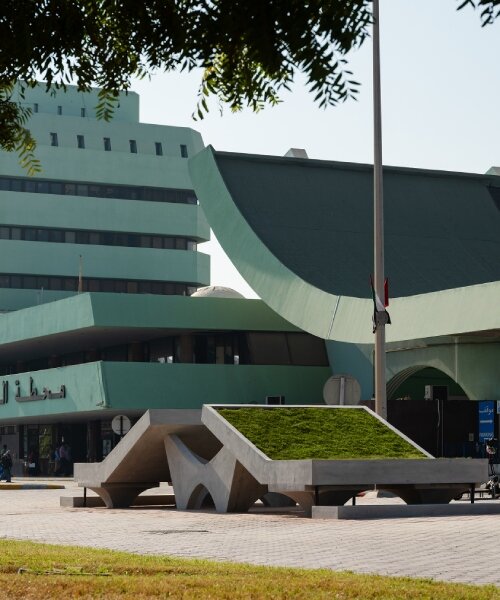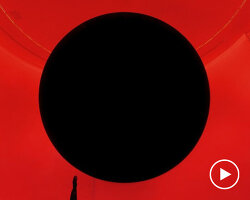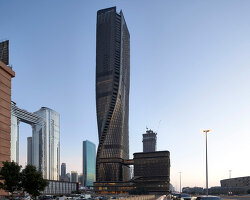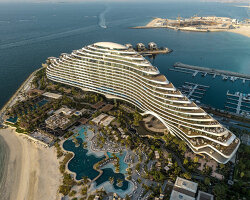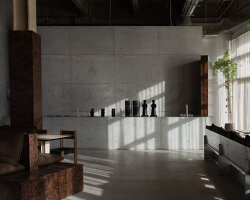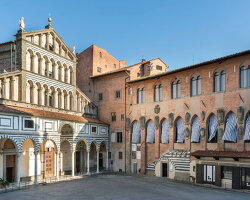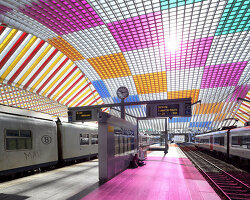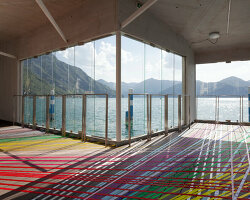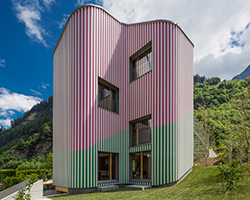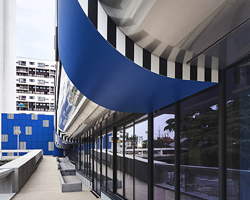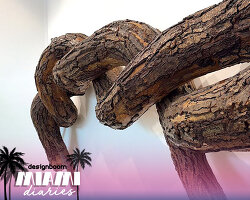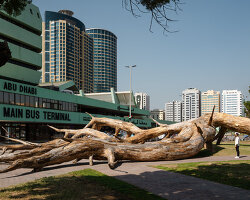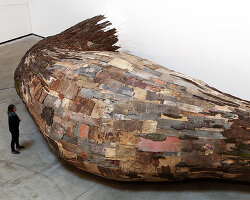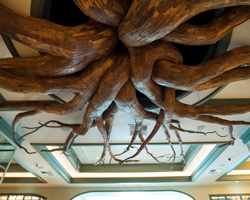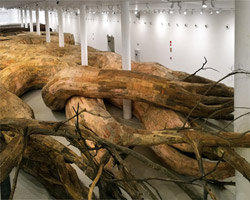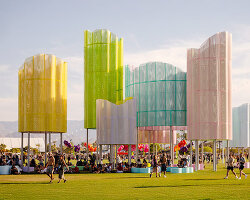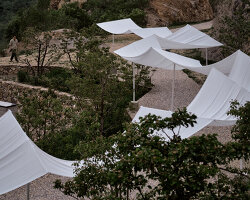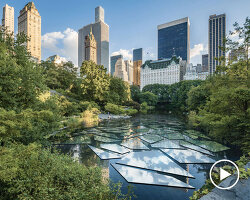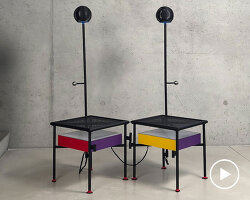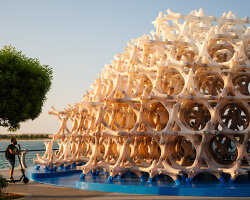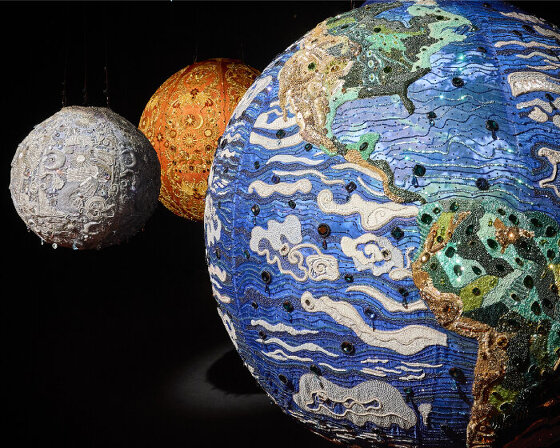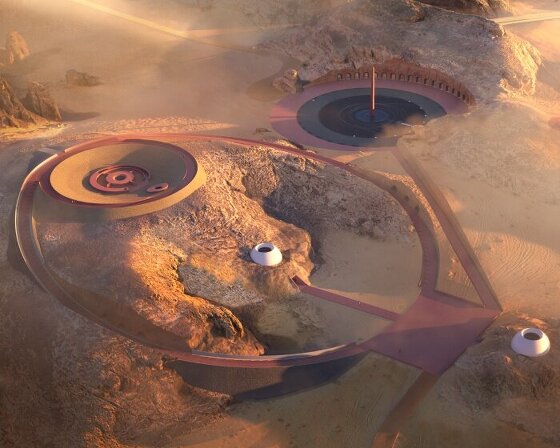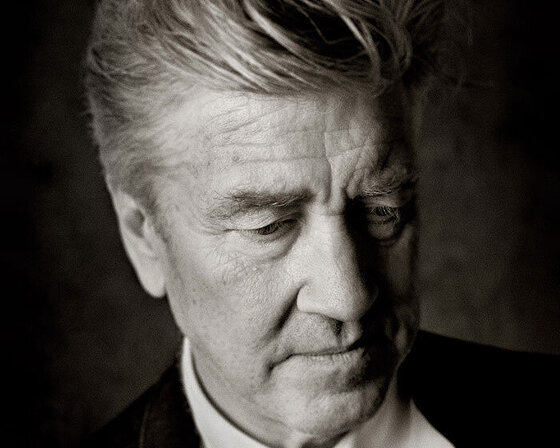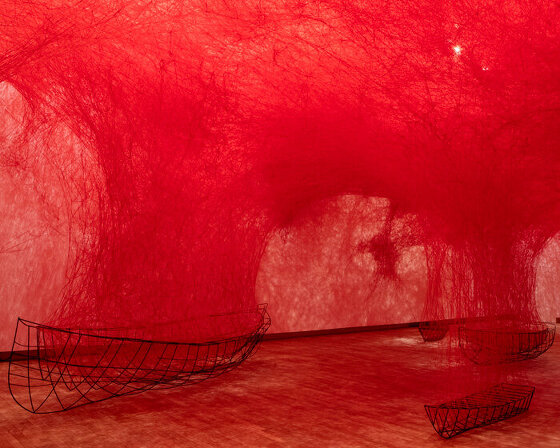public art abu dhabi biennial interventions reclaim bus terminal
Abu Dhabi’s Main Bus Terminal is a landmark of late 20th-century Gulf modernism, with a history steeped in transit, celebration, and daily rituals. Over the decades, it has remained a key node of transit in the UAE capital as both infrastructure and a civic space, accommodating the daily flow of commuters, casual eateries, and the occasional wedding ceremony. Today, for the inaugural Public Art Abu Dhabi Biennial, it has taken on a new role as both muse and stage for several regional and international artists, including Zeinab Alhashemi, Daniel Buren, and Henrique Oliveira, whose site-specific installations merge their individual practices with direct responses to the building’s form, function, and atmosphere.
These interventions vary in scale, medium, and approach, yet all respond to the building’s layered history and striking architecture. The structure was built by Bulgarian architect Georgi Kolarov in 1989 and stands as one of the region’s clearest articulations of an international modernist style, though the terminal’s teal-colored facade adds a distinctive local inflection to what is often otherwise labelled as Brutalist. Its angular concrete massing and hard-edged silhouette suggest the influence of postwar architectural ideals, yet elements like the repeated arches and unexpected curves and its vibrant palette bring a specificity unique to the Gulf’s architectural evolution that continues to inspire artists at the biennial. As their artworks interweave with circulation spaces, facades, and mezzanines long forgotten, they bring forth new dialogues foregrounding the building as an active participant in shaping collective memory, spatial politics, and public imagination.
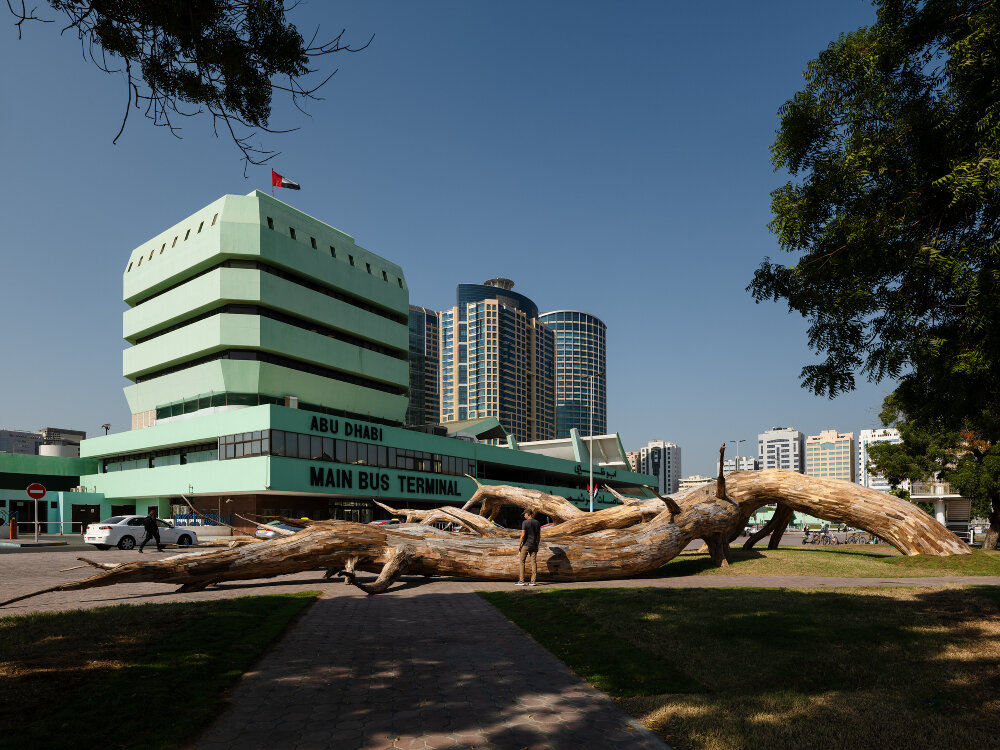
all images by Lance Gerber
henrique oliveira places monumental, organic structure
Henrique Oliviera brings the seventh iteration of his ongoing, monumental Desnatureza series to the Abu Dhabi Bus Terminal. Desnatureza 7 brings a raw, almost primeval energy to the site, positioning a twisted, root-exposed tree trunk at its entrance. The sculpture, which appears almost alien amidst the clean lines and hard surfaces of the Main Bus Terminal’s facade. Constructed from the wood of discarded construction fences, the work echoes the Brazilian artist’s long-standing interest in material reuse and urban entropy and is inspired in part by Werner Herzog’s film Fitzcarraldo. With this surreal presence, the sculpture suggests an uneasy clash between human ambition and natural systems.
Here, Oliveira’s contorted mass becomes both an object of wonder and a rupture as it disrupts the terminal’s visual order, the pedestrian journey, and the threshold, while also integrating into its public rhythm. As commuters pass beneath or beside it, they are confronted by this form and urged to consider the ecological implications of rapid development. The contrast between the organic and the engineered underscores a recurring tension in modern urbanism, which the sculpture makes palpable.
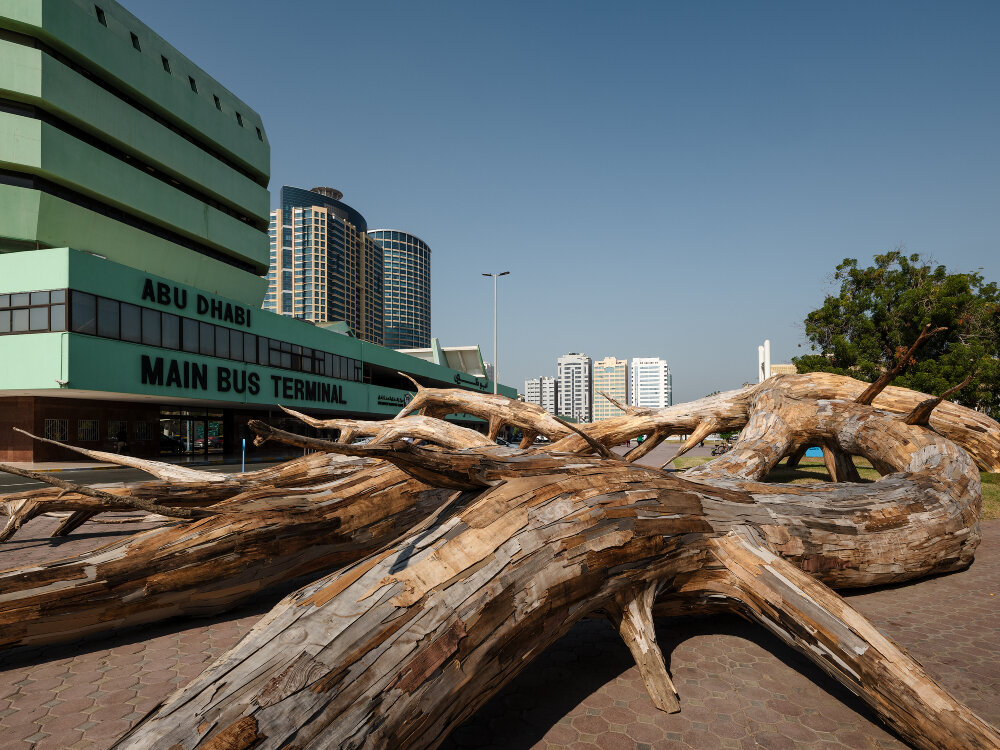
Henrique Oliviera presents the seventh iteration of his ongoing, monumental Desnatureza series
zeinab alhashemi’s equilibrium considers urban growth
In contrast to Oliveira’s more visceral intervention, Zeinab Alhashemi’s Equilibrium engages with the site through quieter forms and narrative. As an artist whose work often bears an architectural sensitivity, Alhashemi plays with the overlap between art, landscape, and civic furniture, continuing to deconstruct the familiar. Here, her pair of identical concrete sculptures, likewise commenting upon the imposing forms of urban and natural growth, appear almost infrastructural — like remnants or extensions of the building itself — and might be easily missed upon first glance.
The works are positioned near the terminal’s entrance and secondary zones, bearing abstracted geometries that evoke the low, layered horizontality and rigid angles of the terminal backdrop, distilling its Brutalist language into compact human-scale forms. While industrial in form and materiality, Equilibrium introduces an optimistic, organic layer of life: a bed of grass grows atop the concrete and becomes a softened platform for informal gathering, a foil to the harshness of their base. This juxtaposition urges reflection on the tension and balance between human development and the resilience of the natural world.
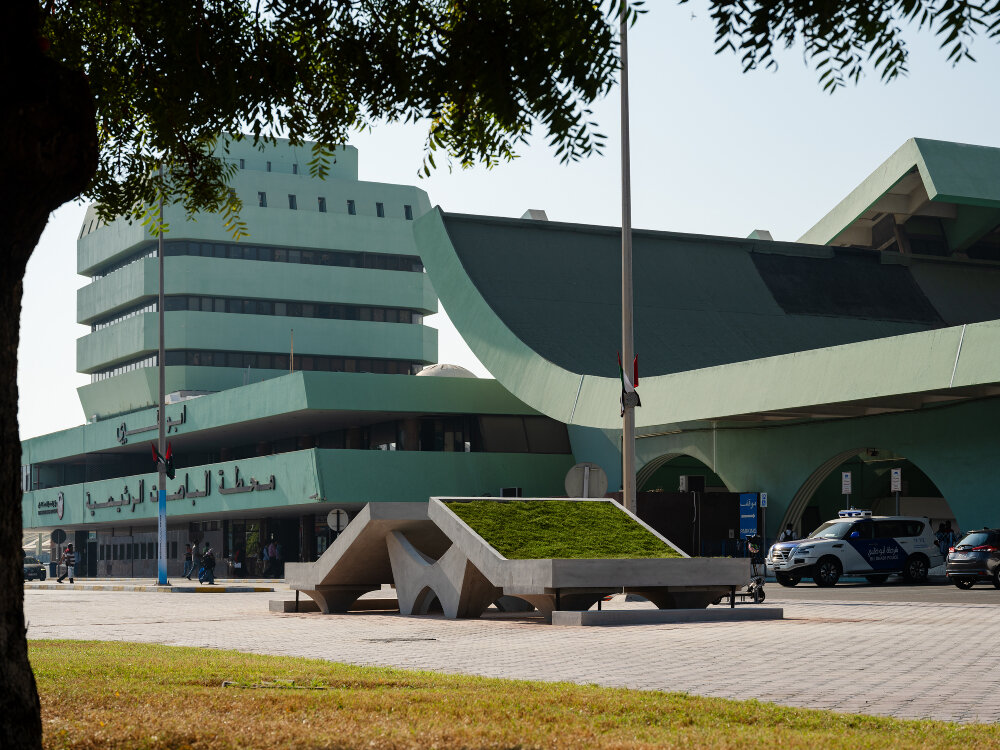
Zeinab Alhashemi’s Equilibrium engages with the site through quieter forms and narrative
daniel buren’s signature stripes echo the modernist architecture
Daniel Buren, inspired by the curves, angles, and layers of the modernist architecture, applies his signature vertical stripes to the terminal itself. With En attendant les fontaines…, the French conceptual artist continues his practice of transforming space and form through optical interventions of monochrome lines.
He adorns the terminals’ curves and arches with white and light teal hues inspired by the original form of the architecture, while fitting select windows with colored filters that create a stained-glass effect, scattering color onto the interior floors and walls as light shifts through the day.
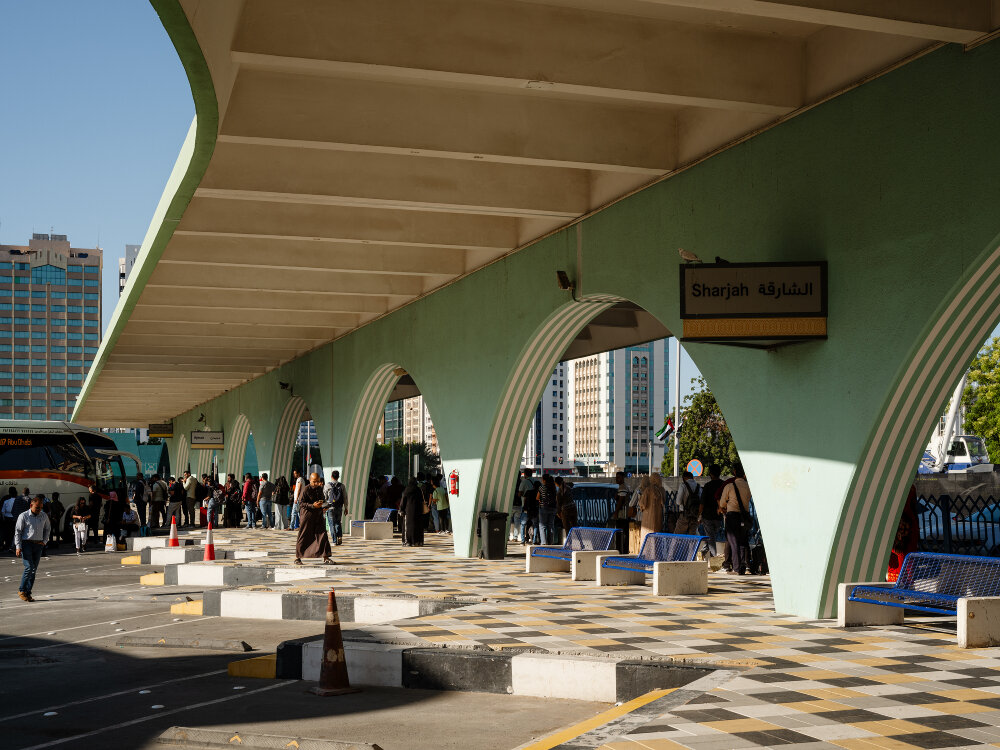
Daniel Buren paints the terminal with En attendant les fontaines…
atelier aziz al qatami renovates the mezzanine layer
Stepping inside, perhaps the most transformational intervention comes from Atelier Aziz Alqatami, whose long-term Al Mahatta project breathes new life into the terminal’s dormant mezzanine. Once used as a wedding hall, an unexpected yet joyful chapter in the building’s public life, the upper level had long been left in a state of disrepair. The Kuwaiti practice was thus commissioned to revitalize this space, choosing to adopt an approach that is both architectural and curatorial. Renovating the space, the architects have carefully preserved the integrity of the original plan while introducing new programs that nod to the Abu Dhabi Main Bus Terminal’s history as a place of connectivity, and its refreshed vision to serve as a community hub where people can gather and sit, instead of simply moving through.
The renovation respects the terminal’s defining features — its horizontality and its rhythmic structural logic — and accentuates them with an atmospheric interplay of light and shadow Alongside creating a new café, film corner, and discussion areas, a temporary multisensory sound installation is also introduced, resonating through the atrium with an homage to the sonic textures of mid-century public spaces.
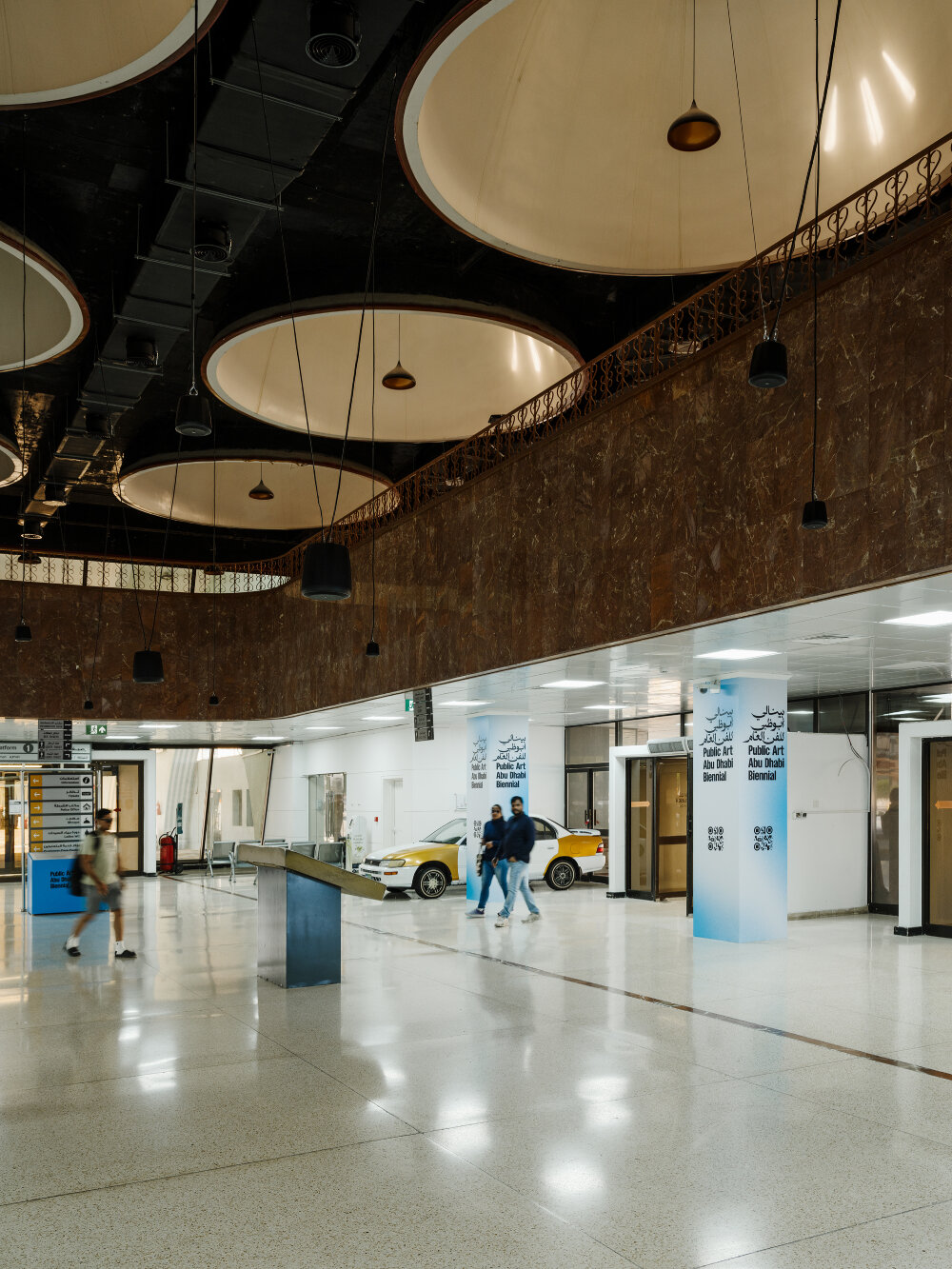
Atelier Aziz Alqatami’s Al Mahatta project breathes new life into the dormant mezzanine
sculptural interventions by eko nugroho and hussein sharif
Also placed within the terminal are works by Eko Nugroho that reflect on personal and collective identities within urban change. Nugroho’s two sculptures, Becoming Stone and Blooming and Reconstruction Dream, combine surreal figuration with ecological and social commentary, bringing the vibrancy of Southeast Asian urban life into conversation with Abu Dhabi’s own complexities. His masked figures stand along the staircase as emblems of resilience yet seem caught in the disorienting flows of city life, much like the commuters around them.
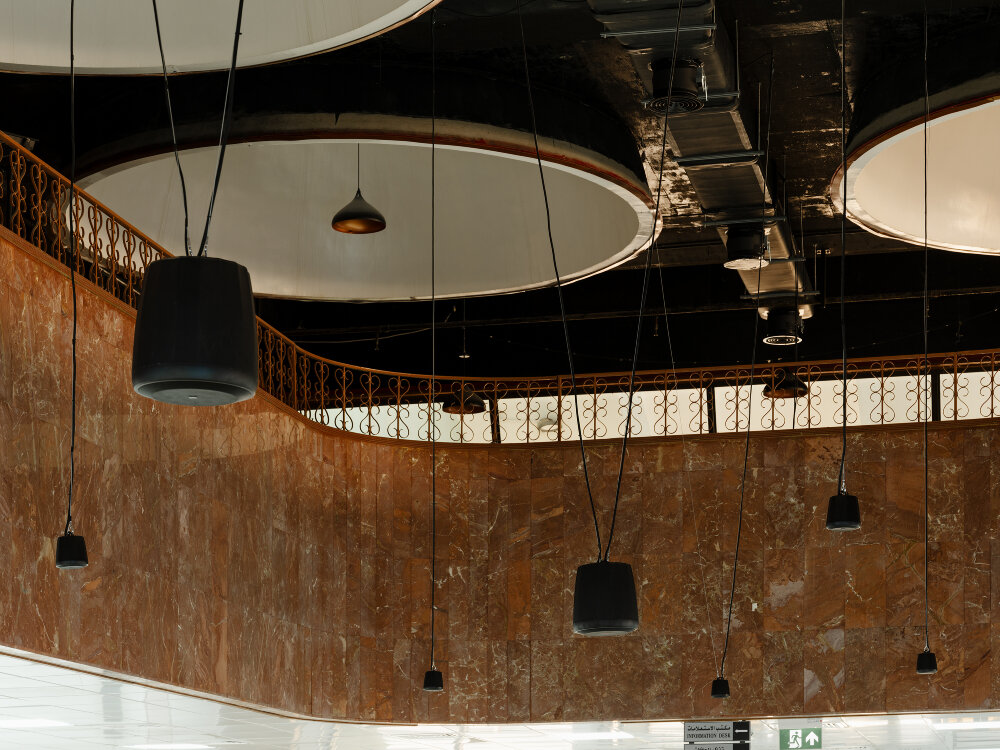
a new community hub
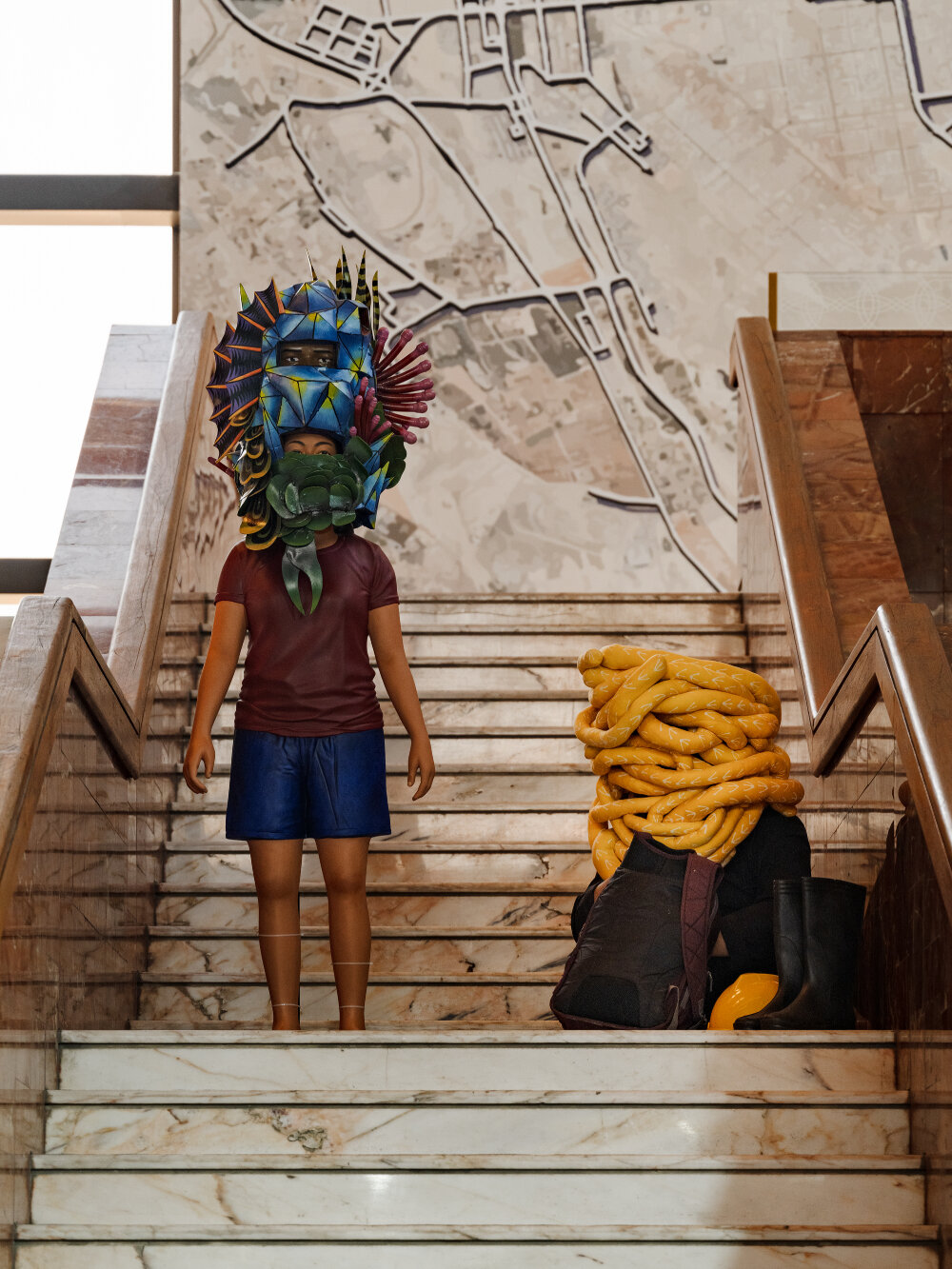
Eko Nugroho’s Becoming Stone and Blooming and Reconstruction Dream
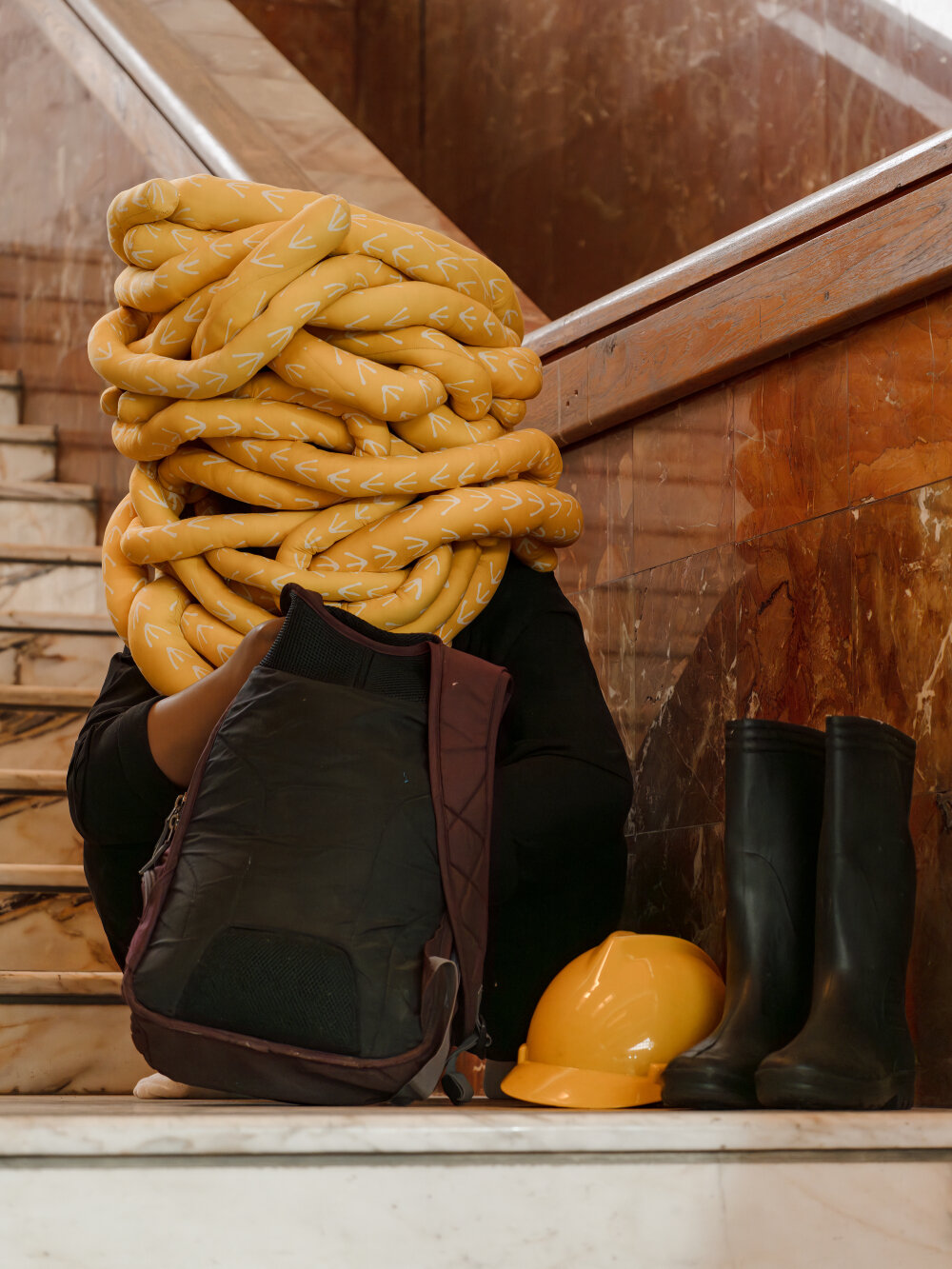
the two sculptures combine surreal figuration with ecological and social commentary
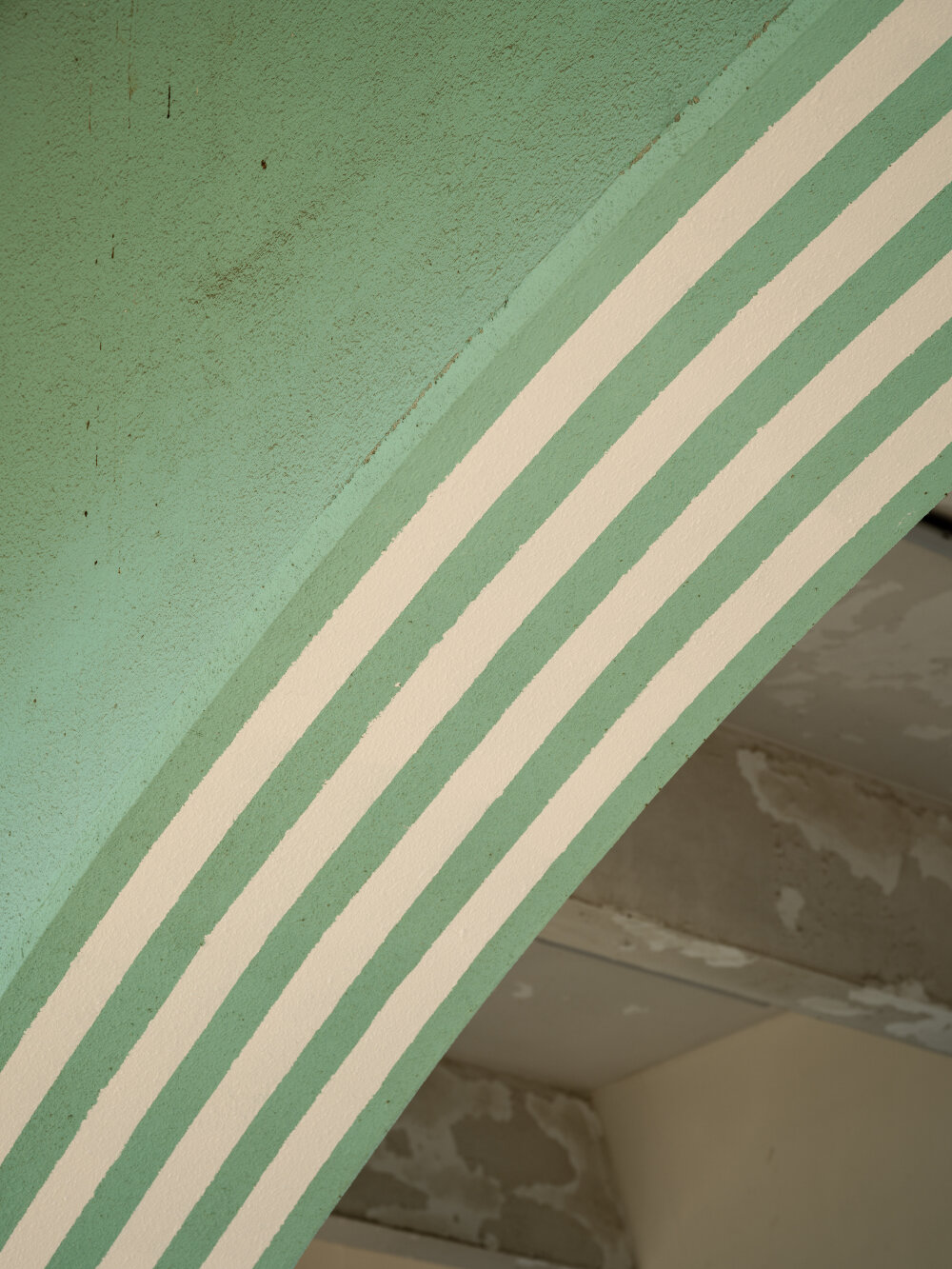
inspired by the curves, angles, and layers of the modernist architecture
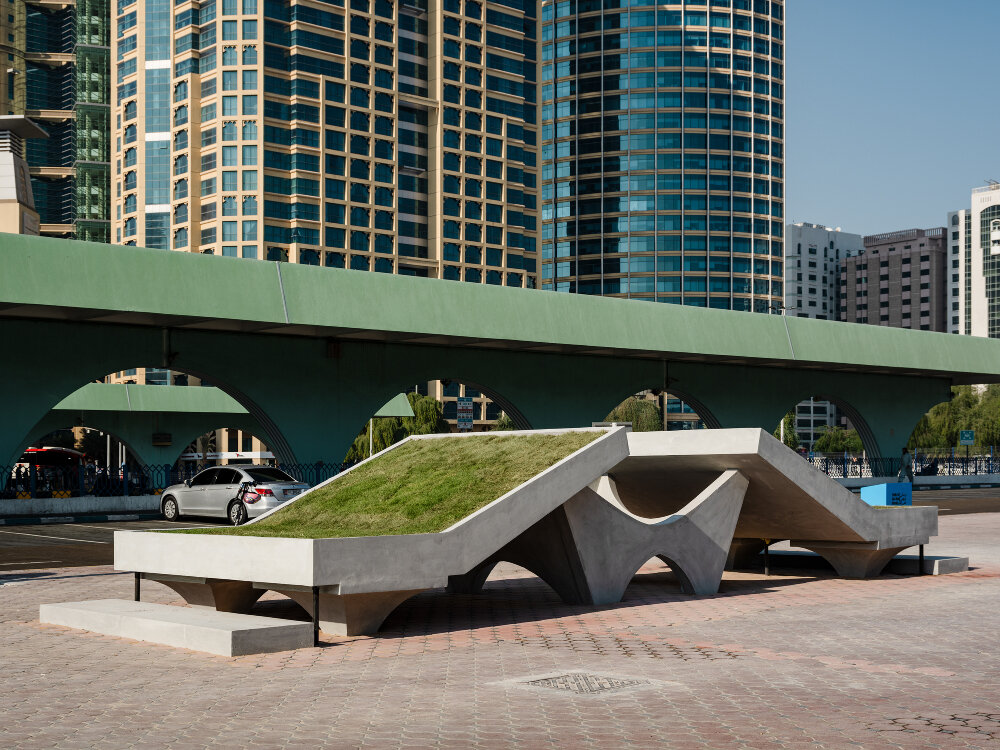
Alhashemi plays with the overlap between art, landscape, and civic furniture

the iconic modernist structure was built by Bulgarian architect Georgi Kolarov in 1989
project info:
name: Abu Dhabi Main Bus Terminal installations
artists: Henrique Oliveira | @henriqueoliveira.studio, Zeinab Alhashemi | @zalhashemi, Daniel Buren, Atelier Aziz Alqatami | @atelierazizalqatami, Eko Nugroho | @ekonugroho_studio
location: Abu Dhabi, UAE
photographer: Lance Gerber | @lance.gerber
event: Public Art Abu Dhabi Biennial | @publicartabudhabi
dates: 15th November, 2024 — 30th April, 2025
